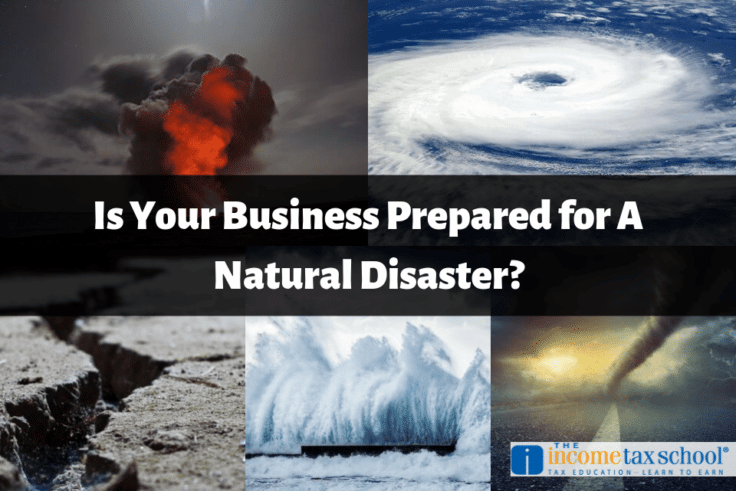
A major disaster could not only affect your family, home, and possessions, it could have a big impact on your business, causing damage, loss in income or worse – you could be forced to close down. In fact, approximately 25% of businesses do not reopen after a natural disaster – for several reasons. This is why small business owners in particular should have a plan in place in the event of a major disaster. Do you have a disaster plan?
Here is a step-by-step strategy to ensure your business, employees, and assets are safe and secure in the event of a natural disaster.
Step 1: Identify specific disasters you may face
Flooding, hurricanes, wildfires, tornadoes, earthquakes… The type of disasters you need to prepare for will depend on where your business is located. Step one is to identify the types of disasters you need to prepare for so that you can plan accordingly.
Step 2: Secure your assets
Whether it’s fire, flooding, or tornadoes, if your business is in the destruction zone, your equipment and documents will be destroyed. Do you have a plan for recovery? Here are some things to think about:
- Backing up information as often as possible – including to the cloud so that documents and information aren’t lost.
- Making sure you have the proper insurance coverage on your equipment so that damaged computers and equipment can be replaced.
- Ensuring that all computers are properly secure in the event of looting or break ins.
Maintaining adequate business insurance is essential. A basic or traditional business insurance package includes property and casualty insurance. However, you should seriously consider adding other optional insurance coverage for additional protection.
Business Interruption Insurance covers you in the event of a casualty that causes your business to be shut down, this coverage would provide for you to be compensated for the loss of income during the time that your business was unable to be in operation.
Step 3: Make an evacuation plan
After you know what to expect and when to expect it, it’s time to make your evacuation plan. When creating your plan, ask yourself questions such as:
- What equipment or business records are our highest priority? Will they need to be relocated in the event of a natural disaster?
- How will I receive emergency warnings and alerts?
- What is our employee evacuation plan?
- What is our policy for coming in during a weather alert?
- Who is in charge of securing the building during the threat of bad weather?
For more information on how to make your personalized plan, click here for U.S. Small Business Administration’s Guide to Disaster Assistance. And most importantly, make sure every employee and associate is aware of the plan and how to execute it.
Step 3: After the natural disaster hits
The first step to recovery after a natural disaster is clean-up. Be cautious of dangerous entities such as downed power lines, contaminated water and other threatening toxins. The chances of health concerns become increasingly more prevalent after a natural disaster. For more information and tips on how to avoid hazards after a natural disaster visit the Occupational Safety and Health Administrations website. Furthermore, be sure to contact the National Response Center if you come in contact with hazardous material spills.
In the case that your business is hit and you cannot repair the damages on your own, there are several organizations and programs that can assist you in recovery and repair. If you are unable to find assistance, disaster assistance loans that serve as an option not only homes, but also for businesses, farms, economic injury, etc.
There are also programs that can be beneficial to employees who may not be able to work while your business is under recovery including Disaster Unemployment Assistance and flood recovery assistance (for those who may have been displaced due to flooding). If your business is located in a federally declared disaster area, you may qualify for special tax revisions.
Being prepared not only positively impacts your business, but also your employees. It is imperative that small business owners are able to react accordingly to natural disasters, so that they are not faced with the loss of their business and their employees are not without jobs.
